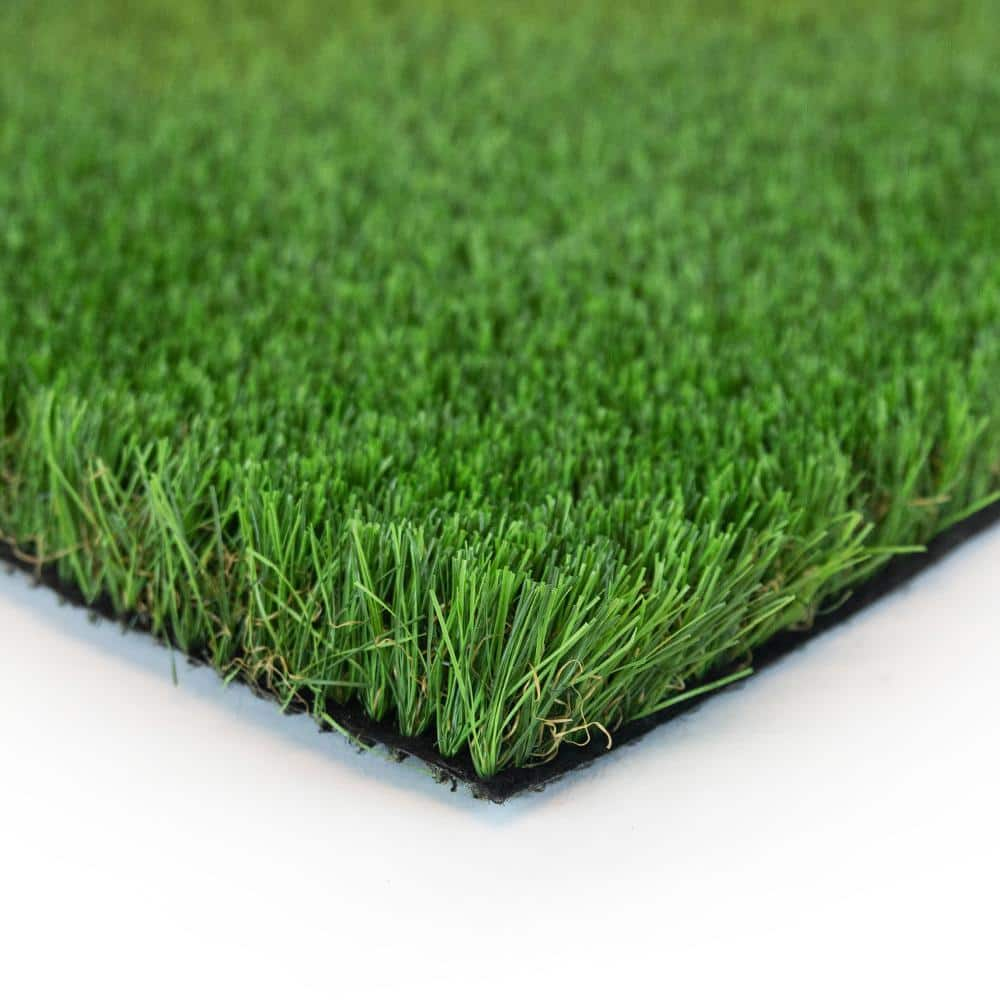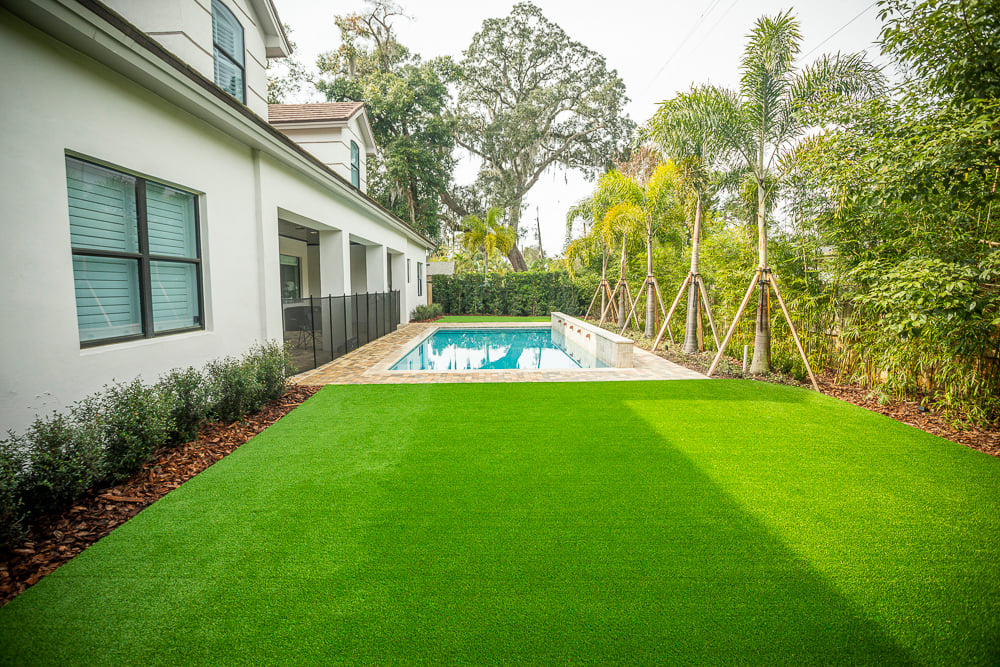Long-Lasting Arizona Artificial Turf for Home and Business Applications
Long-Lasting Arizona Artificial Turf for Home and Business Applications
Blog Article
Delve Into the Environmental Benefits of Opting for Synthetic Grass Solutions
The fostering of man-made grass services presents an engaging chance to address pushing ecological difficulties. By substantially decreasing water usage and decreasing the application of unsafe chemicals, these choices not only promote lasting landscaping however additionally protect neighborhood ecosystems. Additionally, the lower carbon footprint connected with decreased upkeep activities adds to a much more sustainable strategy to land management. The ramifications of these advantages extend past plain conservation efforts, elevating questions regarding their lasting influence on habitat preservation and total ecological balance. Discovering these measurements reveals a complicated interaction worth considering.
Water Conservation Perks
Among the most considerable benefits of synthetic grass is its capability to save water. Conventional grass lawns call for substantial watering, specifically in locations prone to drought or water restrictions. In contrast, synthetic grass does not need watering, dramatically reducing the general need for water resources. This feature is particularly useful in arid regions where water deficiency is a pushing worry.
By getting rid of the need for normal watering, synthetic grass contributes to lasting landscape practices and helps minimize the environmental influence of too much water usage. Furthermore, the preservation of water extends to the decrease of runoff, which can cause soil erosion and river contamination.
Furthermore, the installment of synthetic grass allows towns and house owners to allot water sources a lot more effectively, concentrating on necessary usages such as drinking water and farming. The shift in the direction of synthetic grass not just advertises responsible water usage however likewise lines up with broader environmental goals focused on protecting all-natural sources.
As areas increasingly prioritize sustainability, the water conservation advantages of synthetic grass provide a compelling situation for its fostering in household and commercial landscape design projects.
Reduced Chemical Use
The transition to fabricated grass significantly reduces the reliance on chemical therapies generally used in all-natural turf upkeep. Standard lawn management usually entails the application of chemicals, herbicides, and plant foods to promote development and control pests. These chemicals can present dangers to human health, neighborhood wild animals, and the atmosphere, contributing to soil and water contamination.
On the other hand, synthetic grass eliminates the requirement for these unsafe substances. Once mounted, it needs minimal maintenance, mostly consisting of routine cleaning and irregular infill replenishment. This decrease in chemical use not only benefits the prompt atmosphere but additionally contributes to broader eco-friendly stability. By decreasing the launch of artificial compounds right into the environment, synthetic grass promotes much healthier soil and water supply.
Additionally, the absence of chemical drainage linked with fabricated turf setups aids safeguard neighborhood waterways from contamination, sustaining water life and keeping biodiversity. Phoenix turf companies. As areas progressively focus on sustainable methods, going with man-made lawn presents a sensible solution that lines up with ecological conservation objectives. Through this change, property owners can take pleasure in lavish eco-friendly areas without endangering ecological health, paving the method for an extra sustainable future
Lower Carbon Impact

Moreover, the installation of synthetic grass can lead to substantial water conservation. All-natural lawns call for substantial quantities of water for irrigation, which not only includes in the carbon impact related to water removal and treatment however also stress neighborhood water resources. On the other hand, synthetic grass requires very little upkeep, needing no watering, therefore substantially decreasing water usage and its connected power costs.
Additionally, the durability of synthetic grass adds to its lower carbon impact. With a life expectancy of up to 15 years or more, the demand for constant replacements is reduced, causing less waste and reduced energy intake in production Bonuses and getting rid of standard turf options. In general, synthetic grass presents a lasting choice for ecologically conscious landscaping.
Environment Conservation
Environment preservation is an essential factor to consider in the discussion over landscaping selections, especially when contrasting synthetic grass to natural grass. Natural turf yards typically need considerable maintenance, including making use of pesticides, herbicides, and fertilizers, which can adversely influence regional environments. These chemicals can leach right into the soil and rivers, harming indigenous flora and animals and interrupting local environments.
In contrast, synthetic grass offers a chance to reduce the environmental footprint of landscaping. By going with artificial turf, home owners can reduce the disturbance of natural environments related to traditional yard care methods. Synthetic grass removes the need for dangerous chemicals, thereby safeguarding neighboring wildlife and preserving the stability of bordering ecosystems. Additionally, the installment of synthetic grass can bring about the conversion of former turf areas right into even more biodiverse landscapes, such as pollinator gardens or indigenous plant find out here locations, which can support local wildlife.
Inevitably, the change to synthetic grass not just preserves water and decreases upkeep efforts but likewise fosters a much more harmonious partnership in between human tasks and the native environment, advertising environment conservation at the same time.
Long-Term Sustainability
Lasting sustainability is an important element in reviewing the advantages of synthetic grass over typical lawn yards. One of one of the most substantial advantages of synthetic grass is its toughness; it can last approximately 15-20 years with marginal maintenance, whereas natural lawn needs regular reseeding and replacement. This longevity decreases the need for consistent resources, such as water, fertilizers, and chemicals, which are important for preserving a healthy and balanced yard lawn.
In addition, synthetic lawn adds to a decrease in carbon discharges connected with yard care tools. Standard grass often require gas-powered mowers, leaners, and blowers, every one of which contribute to air contamination. Artificial turf companies phoenix. On the other hand, man-made grass eliminates the demand for such tools, promoting a cleaner atmosphere
Additionally, the production of synthetic grass significantly makes use of recycled materials, boosting its sustainability account. As suppliers take on eco-friendly methods, the ecological footprint of artificial turf proceeds to lessen.

Final Thought
The adoption of synthetic grass solutions presents significant ecological benefits, including significant water preservation, reduced reliance on dangerous chemicals, and a lower carbon footprint. Additionally, synthetic lawn aids in maintaining natural habitats by decreasing land disruption and advertising lasting sustainability via making use of durable products. Collectively, these factors underscore Web Site the possibility of man-made turf to contribute positively to ecological wellness and supply a sensible alternative to typical landscape design methods in an increasingly resource-conscious world.
In contrast, artificial grass does not need watering, dramatically lowering the general need for water sources. By reducing the release of artificial substances into the environment, man-made turf promotes much healthier soil and water systems.
Additionally, the installation of artificial grass can result in significant water conservation. In contrast, fabricated grass requires minimal maintenance, needing no watering, therefore dramatically lowering water usage and its connected power prices.

Report this page